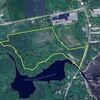Processing Your Payment
Please do not leave this page until complete. This can take a few moments.
- News
-
Editions
-
- Lists
-
Viewpoints
-
Our Events
-
Event Info
- Women's Leadership Forum 2025
- On the Road with Mainebiz in Bethel
- Health Care Forum 2025
- On The Road with Mainebiz in Greenville
- On The Road with Mainebiz in Waterville
- Small Business Forum 2025
- Outstanding Women in Business Reception 2025
- On The Road with Mainebiz in Bath
- 60 Ideas in 60 Minutes Portland 2025
- 40 Under 40 Awards Reception 2025
- On The Road with Mainebiz in Lewiston / Auburn
- 60 Ideas in 60 Minutes Bangor 2025
Award Honorees
- 2025 Business Leaders of the Year
- 2024 Women to Watch Honorees
- 2024 Business Leaders of the Year
- 2023 NextUp: 40 Under 40 Honorees
- 2023 Women to Watch Honorees
- 2023 Business Leaders of the Year
- 2022 NextUp: 40 Under 40 Honorees
- 2022 Women to Watch Honorees
- 2022 Business Leaders of the Year
-
-
Calendar
-
Biz Marketplace
- News
-
Editions
View Digital Editions
Biweekly Issues
- April 21, 2025 Edition
- April 7, 2025
- March 24, 2025
- March 10, 2025
- Feb. 24, 2025
- Feb. 10, 2025
- + More
Special Editions
- Lists
- Viewpoints
-
Our Events
Event Info
- View all Events
- Women's Leadership Forum 2025
- On the Road with Mainebiz in Bethel
- Health Care Forum 2025
- On The Road with Mainebiz in Greenville
- On The Road with Mainebiz in Waterville
- + More
Award Honorees
- 2025 Business Leaders of the Year
- 2024 Women to Watch Honorees
- 2024 Business Leaders of the Year
- 2023 NextUp: 40 Under 40 Honorees
- 2023 Women to Watch Honorees
- 2023 Business Leaders of the Year
- + More
- 2022 NextUp: 40 Under 40 Honorees
- 2022 Women to Watch Honorees
- 2022 Business Leaders of the Year
- Nomination Forms
- Calendar
- Biz Marketplace
School of thought | To save money on school construction costs, Maine should pre-approve sites
Like a rubbernecker gawking at an accident, I can’t stop myself from following the school construction debacle playing out in Massachusetts these days. I suppose it’s no surprise the state that allowed the $2.8 billion Big Dig budget to bloat to $14.6 billion has let its school construction budget follow suit. Naturally, there will be some valuable lessons learned from the fiscal plight faced by the Bay State’s education system. My concern is that the ensuing knee-jerk overreaction will find its way to Maine first. â&Copy;
The train wreck I’ve been ogling in particular is the construction of the Newton North High School. Originally budgeted at an eyebrow-raising $100 million in 2003, the project estimate has nearly doubled to its current eye-popping price tag of $197 million. Granted, it is a 413,000-square-foot behemoth with an arts complex and an athletic wing with swimming pool and climbing wall. But, seriously, can anyone justify public schools weighing in at $478 per square foot? Not only does such excess surpass the cost of some of the region’s most sophisticated health care facilities, it gaudily enters the over-the-top realm of Donald Trump. As you can imagine, local voters and politicians alike are outraged. The response has been a new, statewide model school building program that rewards Massachusetts communities for using off-the-shelf designs for their school projects. But is this cookie-cutter alternative the best answer or simply the most convenient? Maine architects and educators generally believe it’s the latter.â&Copy;
Led by former Maine state Rep. Kevin Glynn (R-South Portland), legislators unsuccessfully pushed a similar cookie-cutter standard for Maine schools in 2005, arguing significant time and money would be saved by precluding the need to design every school from the ground up. “Bricks and mortar don’t educate a child,” Glynn said at the time. True enough. But architects, engineers and the state’s director of school construction all disagreed with the overriding premise of standardized design. And rightly so. They countered that school buildings must be planned with specific sites and community needs in mind. And, as such, a one-size-fits-all mentality just doesn’t add up. Apparently, neither does a $56 million renovation and addition project such as the one proposed — and resoundingly crushed by voters — last year in South Portland. â&Copy;
Finding the right location, fasterâ&Copy;
So where’s the happy medium? According to Alan Kuniholm, a principal of PDT Architects in Portland, it’s all about streamlining the evaluation and selection of that all-important element — location, location, location. â&Copy;
“One of the biggest frustrations I have is in site selection for some of these school projects,” Kuniholm says. “As architects we will spend up to two years locating a site that conforms to various initiatives and policies throughout the state, not to mention the politics of working through site alternatives at the local level.” Add to that the complexities and cost of school consolidation, smart growth, sprawl, fuel costs and the question of greenness, and it becomes “a very expensive process.”â&Copy;
Kuniholm also notes that Maine schools in general are increasingly being used for community activities. Our high schools in particular now offer career training, technical vocational training, business incubation, adult education and health wellness centers. On top of that, consolidation dictates that Maine’s next round of school projects will include more space and serve more people. “With school consolidation there will be a tug-of-war as to where new facilities and expanded facilities will take place,” Kuniholm says. He suggests applying the Pine Tree Zone business model to education by designating preferred, pre-approved school construction sites in the heart of population centers with easy access to utilities. “If we can reduce the amount of time for some of these projects to come to fruition, then we have a chance of lessening the impact of inflation and cost overruns,” he says.â&Copy;
Stung by constituents’ overwhelming rejection of the proposed high school addition and renovation plan, South Portland Superintendant of Schools Suzanne Godin has taken a new tack by engaging residents and encouraging their input. It’s an approach espoused by C. Kenneth Tanner, a noted author and professor of educational leadership at the University of Georgia. “Billions of dollars are being spent each year to retrofit, renovate and build schools in America, and yet these ‘new’ designs are often based on outmoded concepts, ignore special ecological principles and fail to include substantive client input,” Tanner writes. “All stakeholders, from students to community members, must be involved in the planning and design of learning environments.” Factor in the aforementioned pre-approved construction sites and Maine could have a recipe for success that skips the need for cookie-cutters.â&Copy;
Maine is traditionally a late adopter of trends from away. While that approach may brand us as behind the times, regarding school construction projects it may help us avoid buying into pennywise fads that degenerate into pound foolishness. “If we can provide TIFs and pre-approved sites for creating jobs and business development, why shouldn’t we consider the same for our schools which are some of the largest construction projects in the state?” PDT’s Kuniholm asks. “That makes much more sense to me than stock school plans.”â&Copy;
Scott Tompkins, director of business development at Ledgewood Construction, can be reached at editorial@mainebiz.biz.










Comments